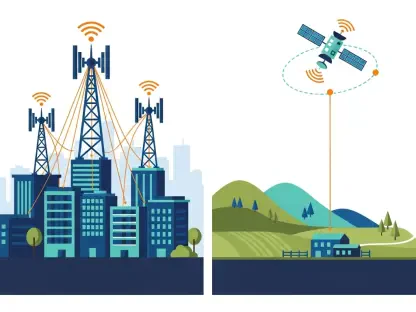The telecommunications industry is at a crossroads, as the demand for faster and more reliable connectivity clashes with the urgent need for sustainable practices. New research conducted by ABI Research, commissioned by Boldyn Networks, sheds light on an innovative solution in the form of Neutral Host Networks (NHNs). According to the study, NHNs are 38% greener and can be up to 47% more cost-effective compared to traditional standalone 5G deployments. These findings come from a detailed comparison of NHNs with traditional 5G networks in densely populated cities such as New York City and Rome, highlighting significant reductions in both environmental and cost challenges that typically accompany 5G densification.
Environmental and Cost Benefits
The primary takeaway from the study indicates a significant reduction in carbon footprints when opting for NHNs over traditional 5G networks. This reduction is especially pertinent as industries worldwide are increasingly accountable for their Environmental, Social, and Governance (ESG) commitments. NHNs offer a promising avenue to mitigate the substantial energy consumption and subsequent emission concerns associated with rolling out extensive 5G networks. Brendan O’Reilly, Group Chief Operating Officer at Boldyn Networks, emphasizes the potential of NHNs to deploy robust connectivity solutions sustainably and cost-effectively. This approach not only accelerates the adoption of 5G technologies but also aligns with the telecommunications sector’s broader commitment to environmental stewardship.
The cost-effectiveness highlighted in the research cannot be overstated, especially as mobile network operators grapple with the high capital expenditures and ongoing operational costs of traditional 5G networks. NHNs serve as a practical alternative, reducing redundancy and leading to a more efficient allocation of resources. By sharing network infrastructure, mobile operators can lower the initial financial burden and achieve operational efficiencies, ensuring that the promising future of 5G connectivity is both achievable and sustainable.
Shift Towards Network Sharing
The overarching trend in telecommunications points towards a widespread adoption of network sharing models to meet today’s sustainability goals and operational demands. This shift is not merely a commercial advantage; it is a strategic move towards creating a more sustainable technological ecosystem. NHNs are emerging as a viable solution that helps network operators fulfill the increasing demands for connectivity while adhering to environmental mandates. The research promotes NHNs as an essential development for the sector, enabling the roll-out of necessary 5G infrastructure without the prohibitive costs and ecological drawbacks.
As the industry moves forward, adopting NHNs could be the key to addressing the growing challenges posed by 5G implementations. With the increasing urbanization and rising mobile data consumption, the demand for dense 5G networks will only intensify. Traditional standalone 5G deployments might falter under such pressures, whereas NHNs offer a resilient, scalable solution. This model allows for significant reductions in duplicated efforts and waste, contributing not just to cost savings but also to a cleaner, greener environment.
The Future of Sustainable Connectivity
The telecommunications industry is at a pivotal moment as the push for faster and more reliable connectivity comes into direct conflict with the pressing need for sustainable practices. Recent research by ABI Research, sponsored by Boldyn Networks, highlights an innovative solution in the form of Neutral Host Networks (NHNs). The study reveals that NHNs are 38% greener and can be up to 47% more cost-efficient compared to conventional standalone 5G deployments. These conclusions derive from an in-depth analysis of NHNs versus traditional 5G networks in densely populated cities like New York City and Rome. This analysis underscores substantial reductions in environmental impact and cost, addressing the significant challenges typically associated with 5G network densification. By moving towards Neutral Host Networks, the industry can achieve the dual goals of advancing technology while promoting eco-friendly practices, a necessary balance in today’s tech-driven but environmentally-conscious world.









